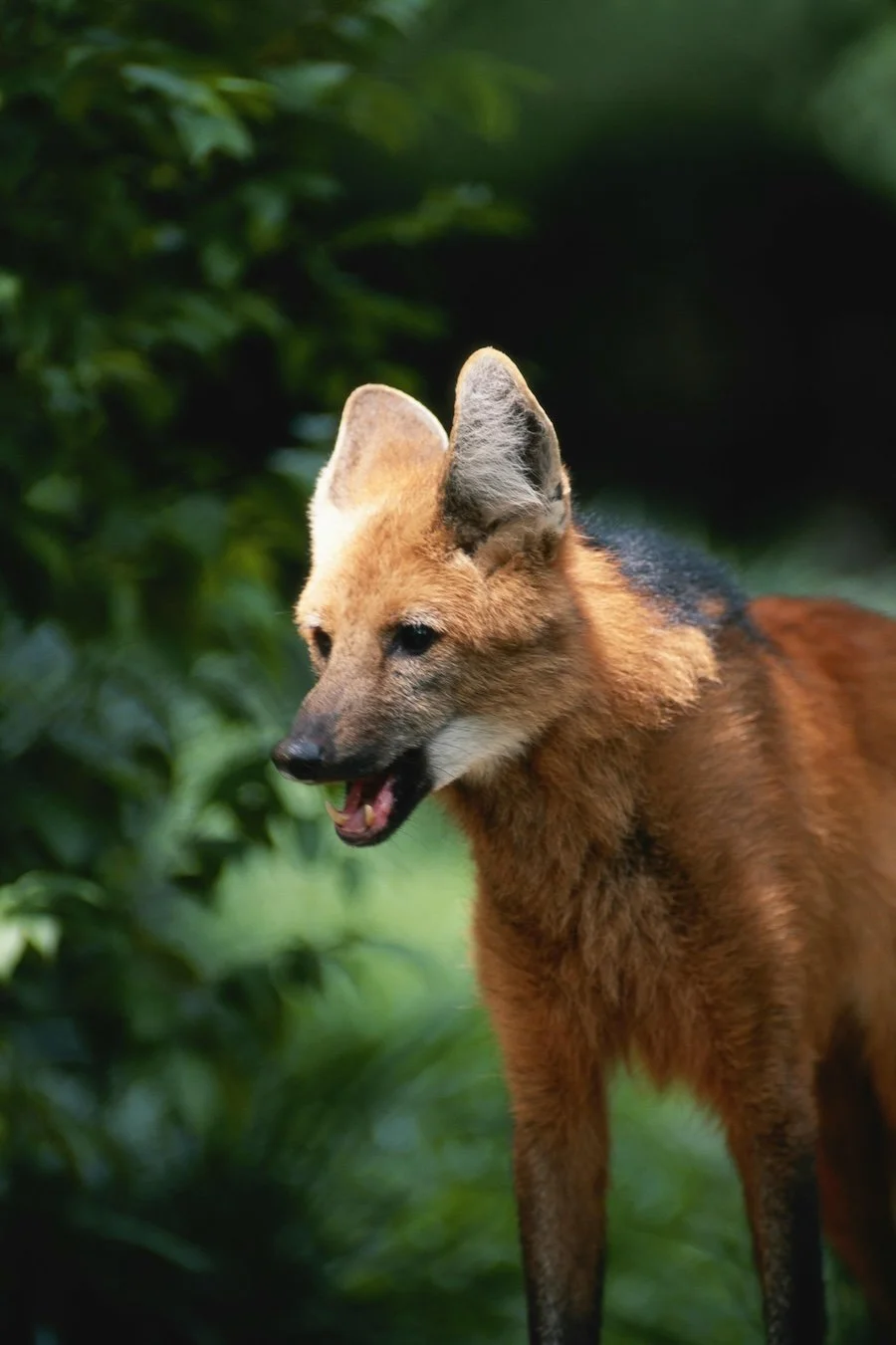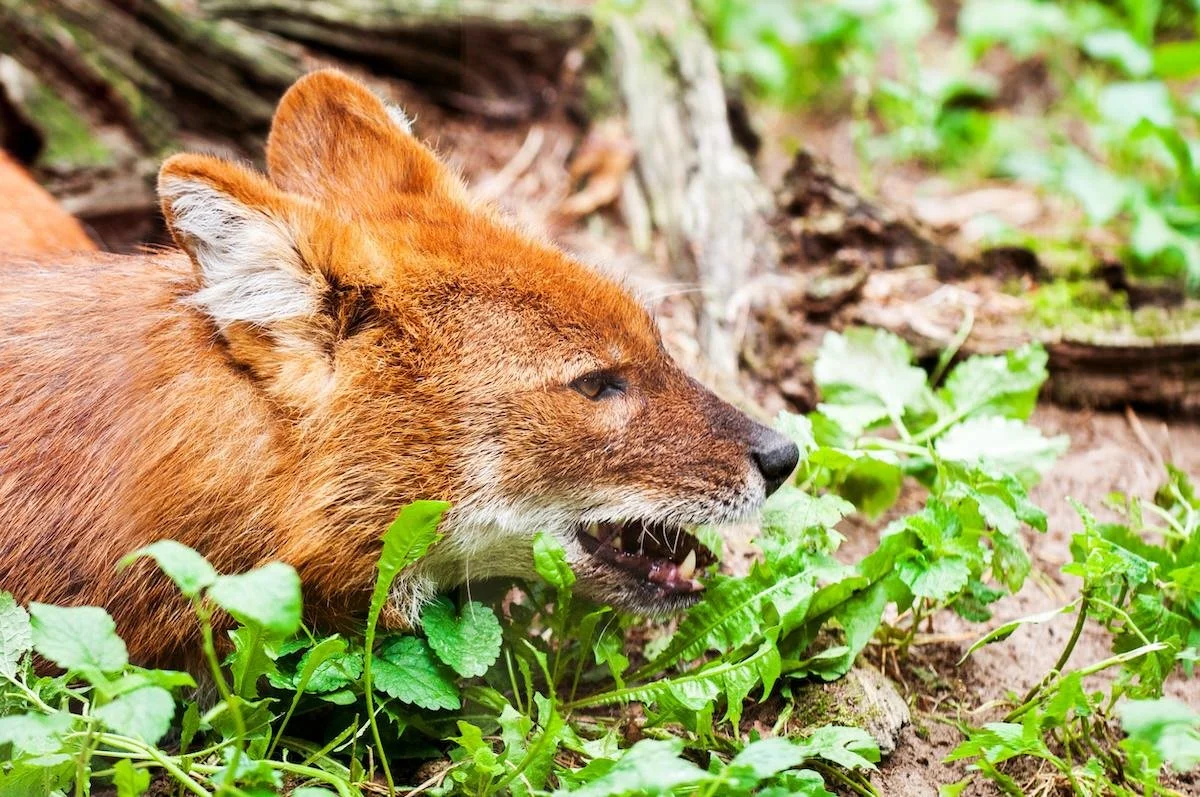MANED WOLVES
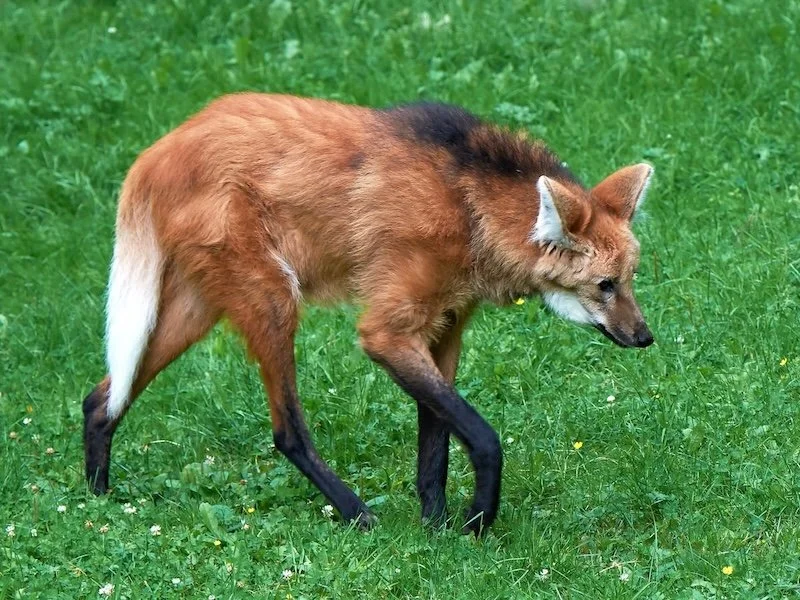
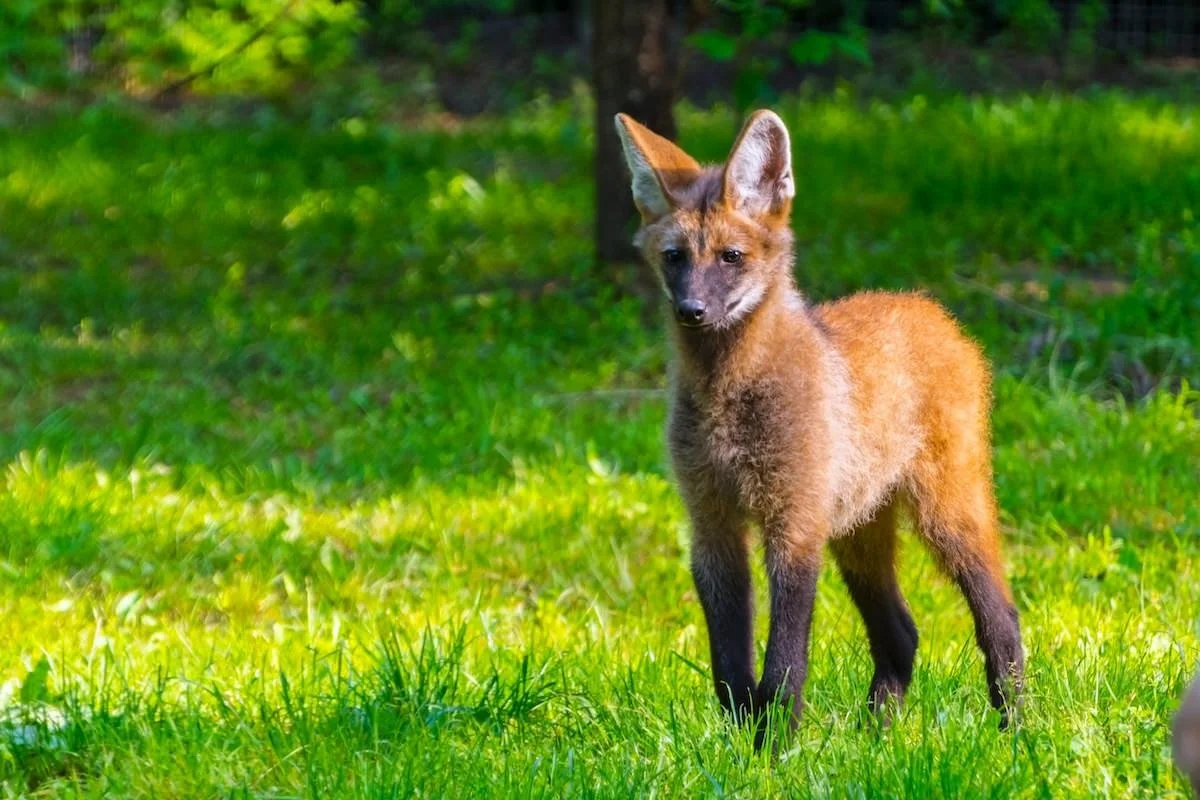
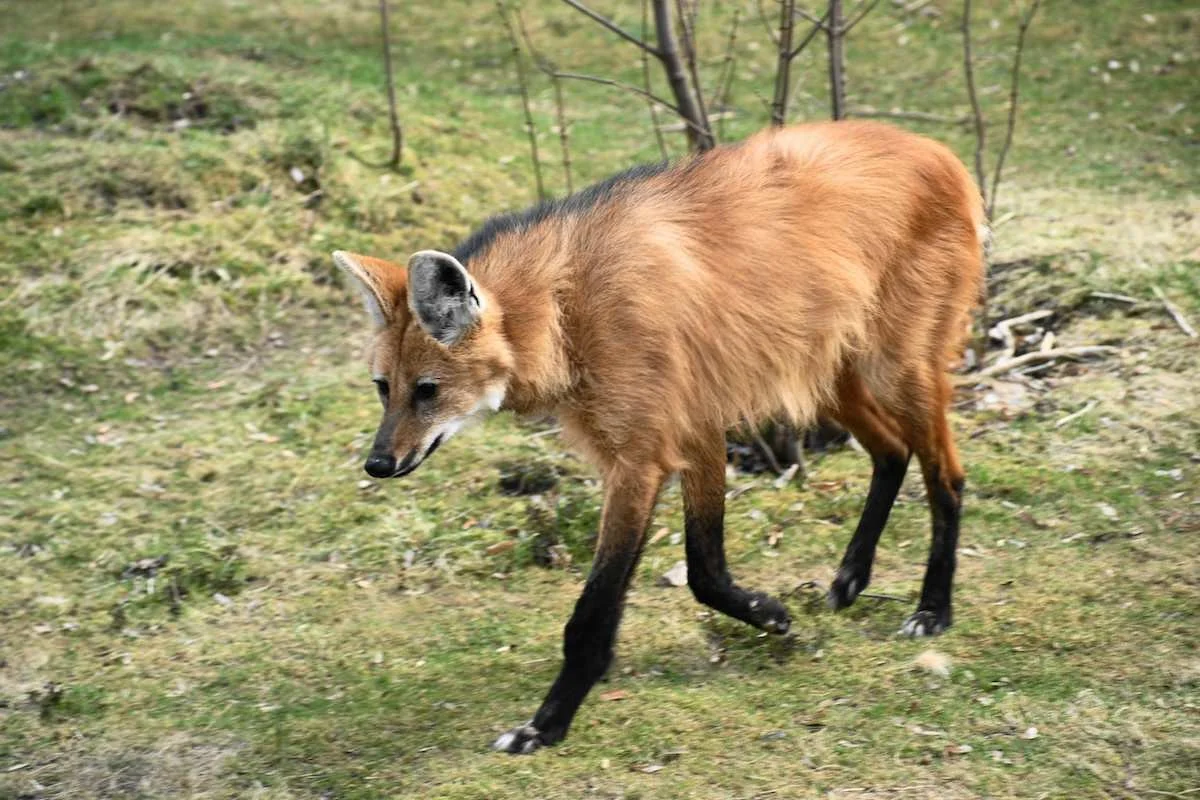
South America's Unique Canid
The maned wolf (Chrysocyon brachyurus) is a fascinating and distinctive member of the canid family, native to the grasslands and scrub forests of central South America. Despite its name, this remarkable creature is neither a true wolf nor a fox, but stands alone in its own genus. Often described as a "fox on stilts" due to its long legs and reddish-brown coat, the maned wolf has captured the imagination of naturalists and animal lovers alike.
Standing about 90 cm (35 inches) tall at the shoulder and weighing between 20-25 kg (44-55 lbs), the maned wolf is immediately recognizable by its tall, slender legs, large erect ears, and distinctive black mane that runs along its neck and shoulders. Its coat is a rich reddish-brown color, with black markings and a bushy tail tipped in black. These unique physical characteristics are well-adapted to its habitat, allowing the maned wolf to see over tall grasslands and navigate through its environment with ease.
The maned wolf's habitat spans several countries in South America, including Brazil (primarily in the Cerrado region), Paraguay, Argentina, Bolivia, and southern Peru. These animals prefer open areas such as savannas and grasslands, avoiding dense forests. This habitat preference is reflected in their dietary habits, as maned wolves are omnivores with a diet that might surprise many. Unlike many of their carnivorous canid relatives, fruits make up about 50% of their diet, with the lobeira or "wolf apple" being a particular favorite. The rest of their diet consists of small mammals, birds, reptiles, and insects.
Surprising Appetites and Solitary Lives
In terms of behavior, maned wolves are primarily solitary creatures, coming together only during the breeding season. They are most active during twilight and nighttime hours, using their keen senses to hunt and forage. Communication between maned wolves often occurs through scent marking and a distinctive vocalization known as a "roar-bark." This unique call, along with their appearance and behaviors, sets them apart from other canid species.
Facing Threats: The Maned
Wolf's Struggle for Survival
Despite their adaptability, maned wolves face several conservation challenges. The International Union for Conservation of Nature (IUCN) classifies them as Near Threatened. The primary threats to their survival include habitat loss due to agricultural expansion and urban development, road accidents as human infrastructure encroaches on their territory, conflicts with humans (often due to perceived threats to livestock), and diseases transmitted by domestic dogs. These pressures have led to a decline in maned wolf populations across their range.
Protecting a Species:
Efforts to Save the Maned Wolf
Conservation efforts for the maned wolf are ongoing and multifaceted. Organizations like the Endangered Canid Project are working to protect these unique animals through various initiatives. These include habitat preservation and restoration projects, community education programs to reduce human-wildlife conflict, vaccination campaigns for domestic dogs to prevent disease transmission, and scientific research to better understand maned wolf ecology and behavior. By studying their movements, diet, and habitat requirements, conservationists can develop more effective strategies to ensure the species' long-term survival.
Fascinating Facts: Unusual Traits
of the Maned Wolf
There are several interesting facts about maned wolves that highlight their uniqueness. For instance, their urine has a distinctive odor often compared to the smell of cannabis, though this is purely coincidental. They play a crucial role in seed dispersal for many plant species in their ecosystem, particularly for the lobeira fruit. Despite rarely entering water, maned wolves are excellent swimmers. In some regions, local folklore considers them to be bearers of good fortune.
A Unique Legacy: The Maned
Wolf's Place in Nature
The maned wolf represents a unique branch of canid evolution and an important part of South American ecosystems. By understanding and appreciating these extraordinary animals, we can work towards ensuring their survival for future generations to marvel at and study. Through continued conservation efforts and public engagement, there is hope for the future of the maned wolf in the diverse landscapes of South America.



